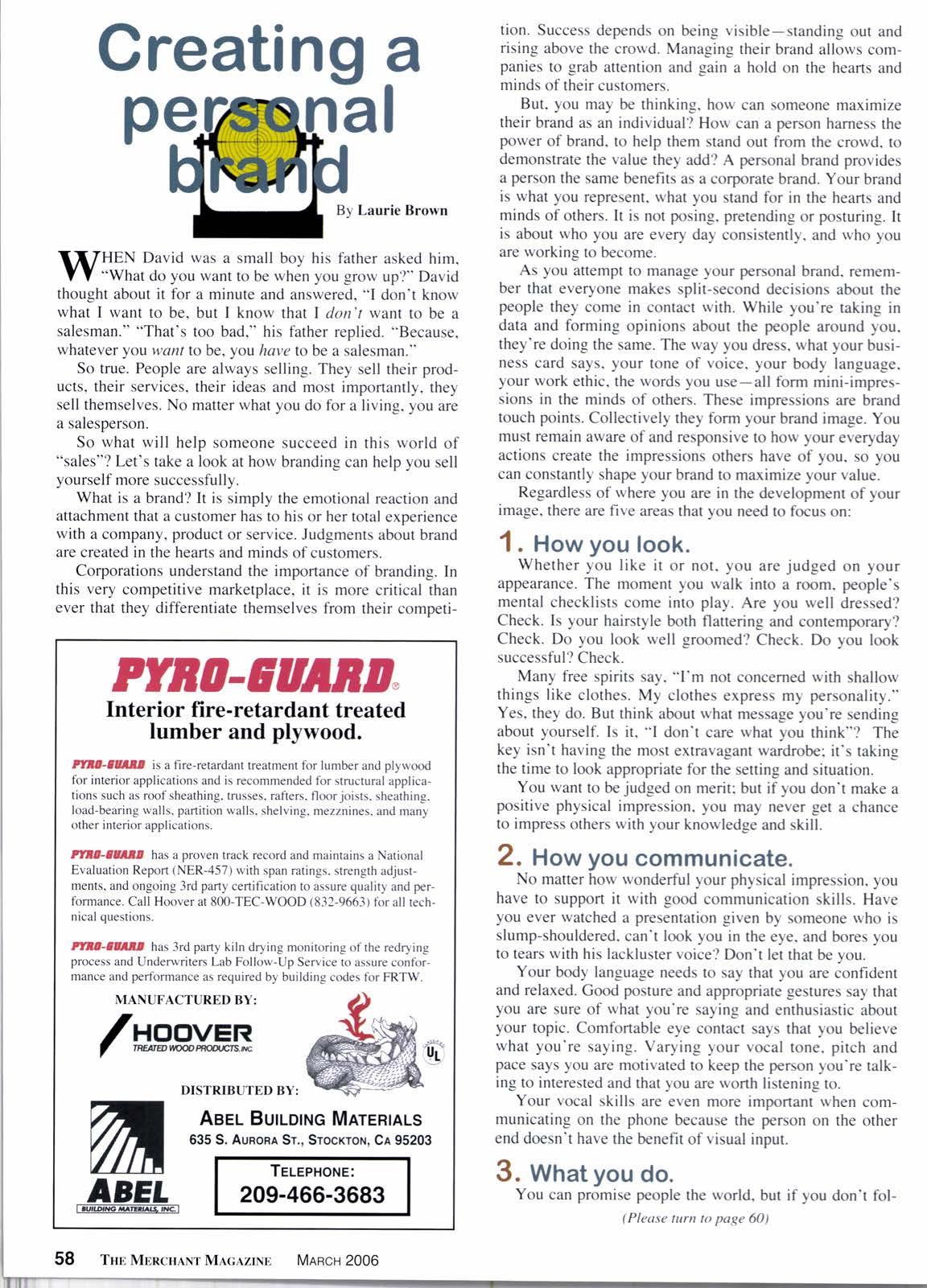
2 minute read
Pyn0-EannD"
Interior fire-retardant treated lumber and plywood.
Fllt-lJlrt is a fire-retardant treatment for lumber and plyrvood for interior applications and is recommended for structural applications such as roof sheathing, trusses. rafters. floor joists. sheathing. load-bearing walls, partition walls, shelving, mezznines. and many other interior applications.
FllO-tJttt has a proven track record and maintains a National Evaluation Report (NER-457) with span ratings. strength adjustments, and ongoing 3rd party certification to assure quality and performance. Call Hoover at 800-TEC-WOOD (832-9663) fbr all rechnical questions.
FllO-tllll has 3rd party kiln drying monitoring of the redrying process and Underwriters Lab Follow-Up Service to assure confitrmance and performance as required by building codes lbr FRTW.
MANUFACTURED BY:
T tPETnE)]tooopf€a,ctsm
DISTRIBUTED BY:
AeeL Butornc MlreRrels
635 S. Aunona Sr., Srocxror.r, Ca 95203
Telepxore: 209-466-3683 tion. Success depends on bein_e visible-standing out and rising above the crorvd. Mana-eing their brand allorvs companies to grab attention and -eain a hold on the hearts and minds of their customers.
But. you may be thinking. horv can someone maximize their brand as an individual? Horv can a person harness the porver of brand. to help them stand out from the crorvd. to demonstrate the value they add? A personal brand provides a person the same benefits as a corporate brand. Your brand is rvhat you represent. rvhat you stand for in the hearts and minds of others. It is not posin_e. pretending or posturing. It is about rvho you are every day consistently. and rvho you are rvorking to become.
As you attempt to manage your personal brand. remember that everyone makes split-second decisions about the people they come in contact rvith. While you're taking in data and forming opinions about the people around you. they're doing the same. The way you dress. rvhat your business card says. your tone of voice. your body langua-se. your rvork ethic. the rvords you use-all form mini-impressions in the minds of others. These impressions are brand touch points. Collectively they form your brand image. You must remain arvare of and responsive to horv your everyday actions create the impressions others have of you. so you can constantly shape your brand to maximize your value.
Regardless of rvhere you are in the development of your image, there are five areas that you need to focus on:
1 . How you look.
Whether you like it or not. you are judged on your appearance. The moment you rvalk into a room. people's mental checklists come into play. Are you rvell dressed? Check. Is your hairstyle both flattering and contemporary? Check. Do you look rvell groomed? Check. Do you look successful? Check.
Many free spirits say. "I'm not concerned rvith shallorv things like clothes. My clothes express my personality." Yes, they do. But think about rvhat message you're sending about yourself. Is it. "l don't care rvhat you think"? The key isn't having the most extravagant rvardrotre: it's taking the time to look appropriate for the setting and situation.
You rvant to be judged on merit: but if you don't make a positive physical impression. you may never get a chance to impress others rvith your knorvled-ee and skill.
2. How you communicate.
No matter horv rvonderful your physical impression. you have to support it rvith good communication skills. Have you ever rvatched a presentation given by someone rvho is slump-shouldered. can't look you in the eye. and bores you to tears rvith his lackluster voice? Don't let that be you.
Your body language needs to say that you are confident and relaxed. Good posture and appropriate -sestures say that you are sure of what you're sayin-e and enthusiastic about your topic. Comfortable eye contact says that you believe rvhat you're saying. Varying your vocal tone. pitch and pace says you are motivated to keep the person you're talking to interested and that you are worth listening to.
Your vocal skills are even more important rvhen communicating on the phone because the p€rson on the other end doesn't have the benefit of visual input.
3. What you do.
You can promise people the rvorld. but if you don't fol(Please turn n page 601










